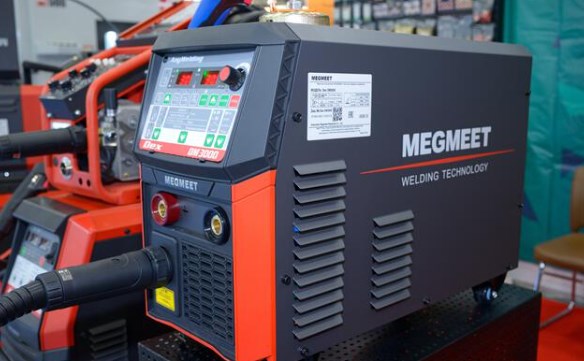Power source for welding plays a pivotal role in determining the quality, efficiency, and effectiveness of the weld. At Megmeet Welding Technology, we pay attention to the reliability and stability of the power source for arc welding and expect all welding operators can select the right arc weld welding machine. Therefore, this blog will delve into the various types of electric arc welding power supplies, their characteristics, and how they influence welding outcomes.
I. What are Arc Welding Power Sources?
Arc welding is a process that uses an electric arc to melt and fuse metals together. The power source is responsible for generating the electric arc and maintaining the stability of the welding process. Different types of power sources cater to specific welding techniques and applications.
II. Types of Arc Welding Power Sources
1) Transformer-Based Power Sources:
Description: Transformer-based power sources are traditional welding machines that convert high-voltage, low-current electricity from the power grid into low-voltage, high-current electricity suitable for welding.
Characteristics:
Durability: Highly durable and robust, suitable for heavy-duty welding tasks.
Simplicity: Simple construction with fewer electronic components, making them easy to maintain and repair.
Cost-Effective: Generally more affordable than inverter-based machines.
Weight: Heavier and less portable compared to modern power sources.
Applications: Ideal for industrial settings and applications where portability is not a primary concern.
2) Inverter-Based Power Sources:
Description: Inverter-based power sources utilize advanced electronic components to convert AC power into DC power. These machines offer greater control over the welding parameters.

Characteristics:
Portability: Lightweight and compact, making them easy to transport and use in various locations.
Efficiency: Higher energy efficiency compared to transformer-based machines.
Precision: Better control over welding parameters, resulting in superior weld quality.
Versatility: Suitable for a wide range of welding techniques, including TIG, MIG, and Stick welding.
Applications: Perfect for fieldwork, automotive repairs, and any application requiring a portable welding solution.
3) Engine-Driven Power Sources:
Description: Engine-driven power sources are self-contained units that generate electricity using an internal combustion engine. They are not dependent on an external power supply.
Characteristics:
Independence: Can be used in remote locations without access to the electrical grid.
Versatility: Capable of powering other equipment in addition to welding machines.
Durability: Designed to withstand harsh environments and demanding conditions.
Weight and Size: Typically larger and heavier than inverter-based units.
Applications: Ideal for construction sites, pipeline welding, and emergency repair work in remote areas.
4) Battery-Powered Power Sources:
Description: Battery-powered welding machines are a relatively new innovation, providing a portable and eco-friendly solution for welding.
Characteristics:
Portability: Extremely lightweight and easy to carry.
Eco-Friendly: No emissions and low noise levels.
Convenience: Can be used in locations without any power source.
Limited Run Time: Battery life may limit the duration of welding tasks.
Applications: Suitable for light-duty welding tasks, maintenance work, and applications requiring maximum portability.
III. Selecting the Right Power Source for Your Needs
Choosing the right arc welder machine depends on various factors, including the welding technique, material type, work environment, and project specifications. Here are some considerations to help you make an informed decision:
Welding Technique: Different power sources are optimized for specific welding techniques. For example, inverter-based machines are excellent for TIG and MIG welding due to their precise control over parameters.
Material Type: The thickness and type of material being welded influence the choice of power source. Heavy-duty welding on thick materials may require a robust transformer-based machine, while thinner materials may benefit from the precision of an inverter-based unit.
Work Environment: Consider the location and conditions of your welding tasks. For fieldwork and remote locations, engine-driven or battery-powered sources offer the necessary independence from the power grid.
Portability: If your work involves frequent movement between job sites, a lightweight and portable inverter-based or battery-powered machine is ideal.
Budget: Cost is always a factor. While inverter-based machines may have a higher upfront cost, their energy efficiency and versatility can lead to long-term savings.
IV. Conclusion
Understanding the types and characteristics of arc welding power sources is crucial for achieving optimal welding results. If you need the precision of an inverter-based unit, Megmeet Welding Technology has the right solution for you. You can check the Megmeet welding machine list and contact us to get a quote.

Related articles:
1. How Does Arc Length Affect a Weld?
2. Laser Welding Vs. Arc (TIG) Welding
3. Arc Welding Tools and Equipment List
4. How to Select and Use an Arc Welding Power Source?
5. GMAW vs. CO2 Welding: A Comparison of Two Metal Arc Welding Processes





